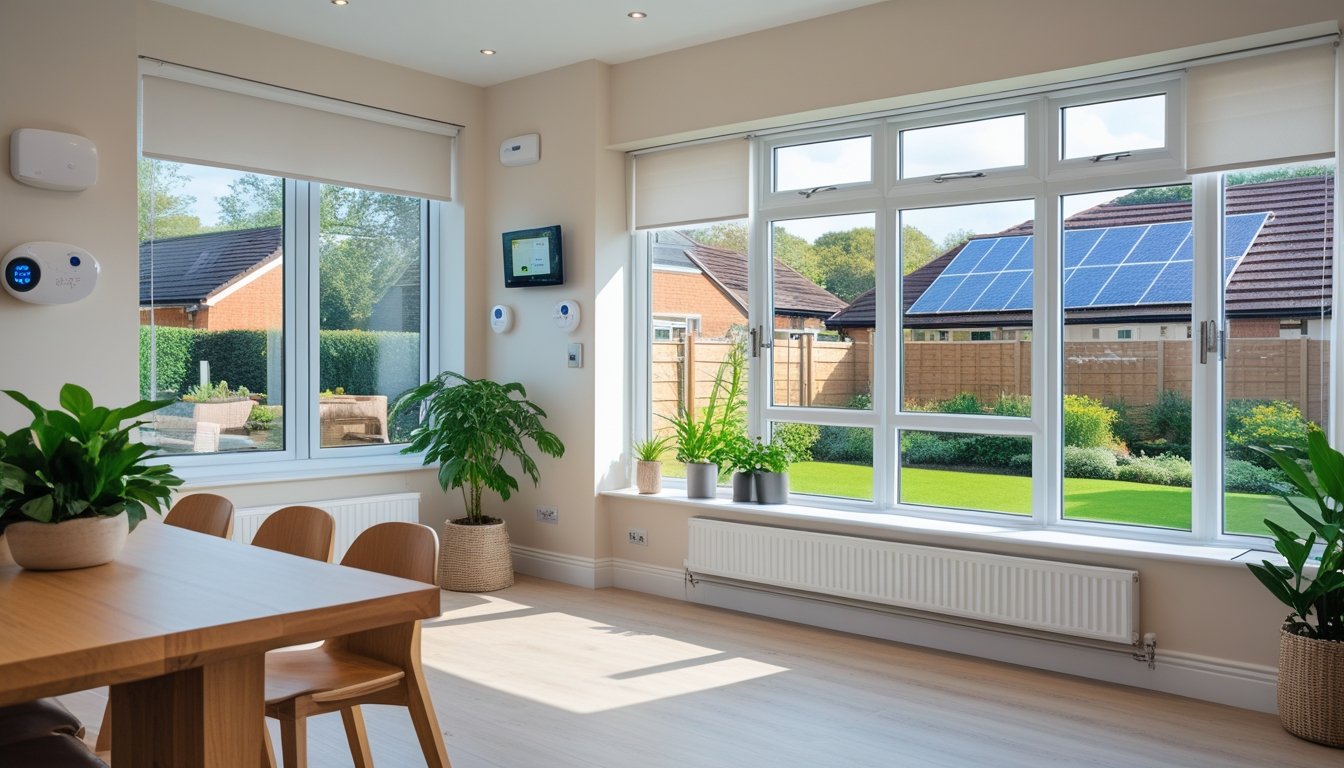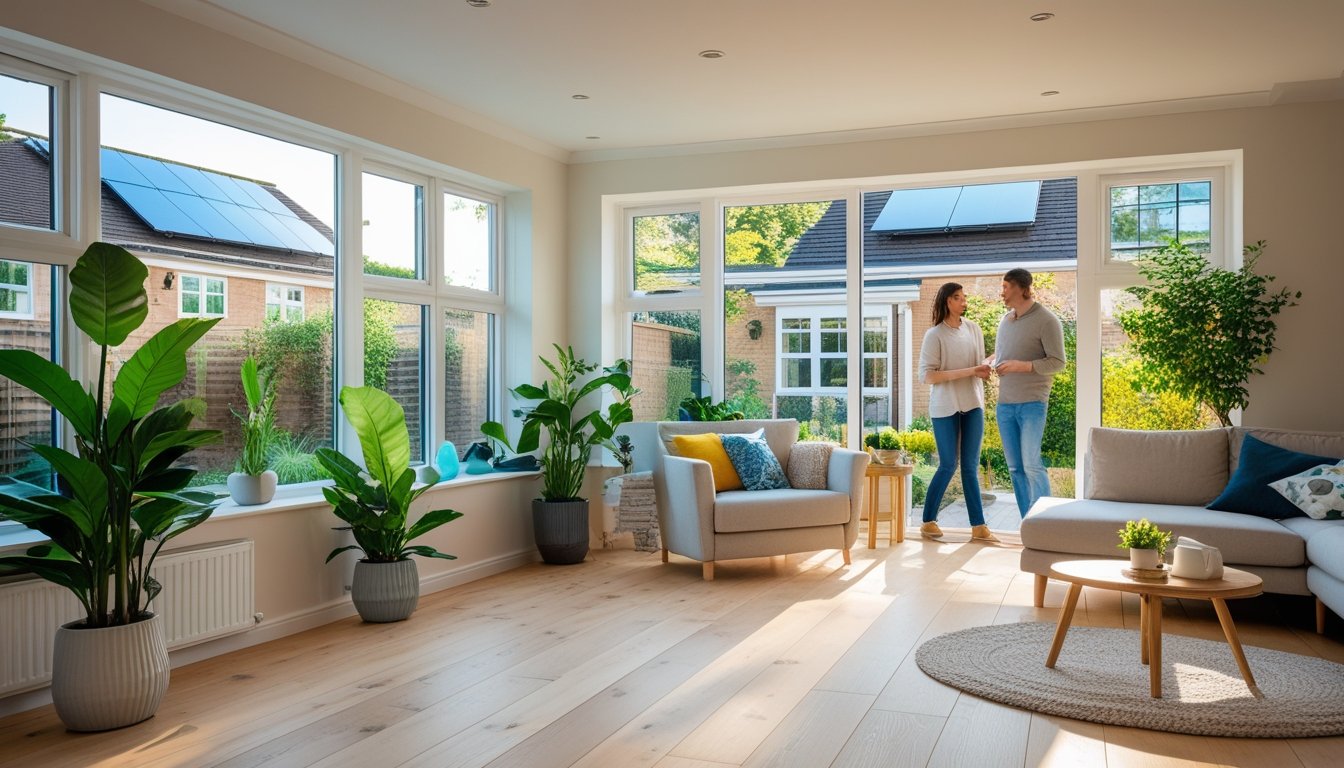Late updated: 06 Nov 2025 15:11
Written by: Eleanor Hartman
Eco-Friendly Ways To Improve UK Home Comfort: Sustainable Tips For Cosy Living
In today's world, making our homes more comfortable while being kind to the environment is an achievable goal for homeowners across the UK. As awareness grows about eco-friendly practices, more people are exploring ways to combine style, comfort, and sustainability. This blog explores practical solutions that not only enhance the comfort of your living space but also contribute to a healthier planet.

Focusing on eco-friendly materials and energy-efficient upgrades can significantly increase home comfort while reducing environmental impact. From advanced insulation to smart home technology, there are various ways to create a cosy and responsible living environment. Choosing materials like recycled steel, bamboo, or sheep's wool insulation ensures that we maintain comfort without compromising ecological ethics.
Exploring these options invites us to rethink what it means to live sustainably in the UK. By implementing thoughtful changes, we can lead the way in transforming our homes into welcoming havens that are both stylish and sustainable. This journey doesn't only mean lower utility bills and a smaller carbon footprint but also a sense of pride and responsibility for the world we share.
Key Takeaways
- Eco-friendly upgrades enhance comfort and reduce environmental impact.
- Insulation and smart technology boost home efficiency.
- Sustainable materials create a stylish and responsible home.
Core Eco-Friendly Upgrades For UK Home Comfort

Improving your home’s energy efficiency not only reduces energy bills but also enhances comfort and minimises environmental impact. By focusing on insulating and draught-proofing, adopting renewable energy, and upgrading heating systems and windows, we can create a more sustainable and comfortable living environment.
Improving Insulation and Draught-Proofing
Proper insulation is pivotal in maintaining a consistent indoor temperature. Loft insulation is one of the most cost-effective improvements, preventing heat loss through the roof. By insulating our walls, floors, and roofs, we can keep warm air inside during winter and cool air inside during summer.
Draught-proofing is equally essential. Simple measures, like sealing gaps around doors and windows, stop unwanted cold air from entering. By reducing draughts, we not only improve comfort but also contribute to lower energy usage, decreasing our carbon footprint.
Adopting Renewable Energy Solutions For Homes
Renewable energy sources, such as solar panels, play a crucial role in reducing carbon emissions. Solar energy systems convert sunlight into electricity, which can power our homes in an eco-friendly manner. The Smart Export Guarantee allows us to sell excess energy back to the grid, benefiting both the environment and our wallets.
Heat pumps offer another sustainable option. They transfer heat from the ground or air into our homes, using significantly less energy than conventional systems. With support from the Boiler Upgrade Scheme, we can replace outdated systems, further promoting sustainability.
Enhancing Heating and Cooling Efficiency
Modernising heating and cooling systems is critical for improving energy efficiency. We can install smart thermostats to regulate temperatures more effectively, leading to considerable energy savings. By programming heating and cooling cycles, smart thermostats ensure our homes are comfortable when needed, avoiding unnecessary usage when they are not.
Heat pumps and modern boilers can also enhance our home's energy efficiency. By upgrading to efficient technologies, we reduce greenhouse gas emissions and enjoy consistent indoor temperatures year-round, ensuring comfort without excessive energy use.
Upgrading Windows and Glazing
Improving windows and glazing helps maintain comfortable indoor environments. Energy-efficient windows, such as double or triple-glazed windows, significantly reduce heat loss. These specialised windows are designed to insulate, keeping unwanted heat out in summer and retaining warmth in winter.
When we upgrade windows, the Centre for Sustainable Energy suggests considering frames and glass that enhance insulation. Investing in high-quality glazing contributes to a noticeable reduction in energy bills and a more sustainable home.
By implementing these upgrades, we not only create comfortable living spaces but also make significant strides towards sustainability.
Additional Sustainable Solutions To Boost Comfort And Reduce Impact
As we look to enhance comfort in our homes while reducing our environmental impact, several innovative solutions come to mind. These range from integrating smart technology into our daily lives to adopting sustainable materials and practices.
Smart Technology For Efficient Living
Implementing smart technology can greatly improve home efficiency. Smart thermostats are an excellent addition, allowing for precise temperature control and energy savings. We can schedule heating and cooling based on when we’re home or away, reducing unnecessary energy use.
Mechanical ventilation, particularly Mechanical Ventilation with Heat Recovery (MVHR) systems, can also enhance indoor air quality. These systems exchange indoor and outdoor air while retaining heat, resulting in better air quality without wasting energy. LED bulbs offer another smart upgrade, consuming significantly less energy than traditional bulbs whilst maintaining high-quality lighting.
Water Conservation And Rainwater Harvesting
Water conservation is essential in a sustainable home. Installing a water butt can effectively collect rainwater, which can be reused for gardening and non-potable uses.
A more extensive rainwater harvesting system can collect and store larger quantities of rainwater, which can then be used for toilet flushing or laundry. Additionally, using water-saving fixtures like low-flow taps and dual-flush toilets conserves water without compromising on performance. These measures can significantly reduce water bills and support sustainability efforts.
Eco-Conscious Materials And Furnishings
Choosing sustainable and recycled materials for home furnishings can make a big difference. Sustainable materials such as bamboo, reclaimed wood, and recycled metal provide eco-friendly options for furniture and flooring.
Using eco-friendly paint reduces volatile organic compounds (VOCs) emitted into our home environment, improving the air quality. Incorporating a green roof not only adds beauty but also provides insulation, reduces heat gain, and supports biodiversity. These materials ensure we’re making environmentally-conscious choices without sacrificing style.
Waste Reduction And Indoor Air Quality Improvements
Reducing waste in our homes is another impactful strategy. Implementing a recycling and composting system reduces the amount of waste we send to landfill. This practice also enriches our garden soil and supports a sustainable lifestyle.
Improving indoor air quality is vital for our health, and ventilation systems can help achieve cleaner indoor environments. We should ensure regular maintenance of heating and air systems to minimise dust and allergens. Introducing houseplants can further purify the air. By focussing on these small yet significant changes, we can create a healthier living space while minimising our ecological footprint.
Frequently Asked Questions

Exploring eco-friendly solutions requires us to consider insulation materials, renewable energy sources, and smart technologies to enhance comfort and sustainability in UK homes. Let's address some common queries in this space.
What are the most effective insulation materials for reducing energy consumption in UK homes?
There are several eco-friendly insulation materials that can help reduce energy consumption. Materials such as sheep's wool, cellulose, and hemp provide excellent thermal properties. These not only improve energy efficiency but are also sustainable choices, as they are derived from renewable sources.
How can double glazing improve thermal efficiency in residential properties?
Double glazing significantly enhances the thermal efficiency of homes. This technology reduces heat loss by trapping a layer of air between two panes of glass, thus improving energy retention. This leads to lower heating requirements and subsequently reduces energy bills.
What renewable energy sources are best suited for domestic use in the United Kingdom?
Solar panels and wind turbines are the most viable renewable energy options for UK homes. Solar panels convert sunlight into electricity, while small wind turbines can complement solar energy, especially in areas with frequent wind. Both methods can reduce reliance on the grid.
Which draught-proofing techniques offer the best balance between cost and energy saving?
Effective draught-proofing techniques include sealing windows, doors, and chimneys with strips, sealant, or brush strips. These methods are cost-effective and reduce heat loss without costing excessively, hence offering a practical way to improve energy efficiency.
How can smart thermostats contribute to eco-friendly home management?
Smart thermostats optimise heating systems by learning our preferences and adjusting temperatures accordingly. These devices can significantly cut energy usage by ensuring heating is only used when necessary, therefore aligning with eco-friendly home management principles.
In what ways can rainwater harvesting systems be integrated into UK households for improved sustainability?
Rainwater harvesting can be seamlessly integrated by installing tanks or barrels to collect rainwater from roofs. This water can be used for garden irrigation and toilet flushing, reducing the demand on mains water and promoting sustainable water management practices.